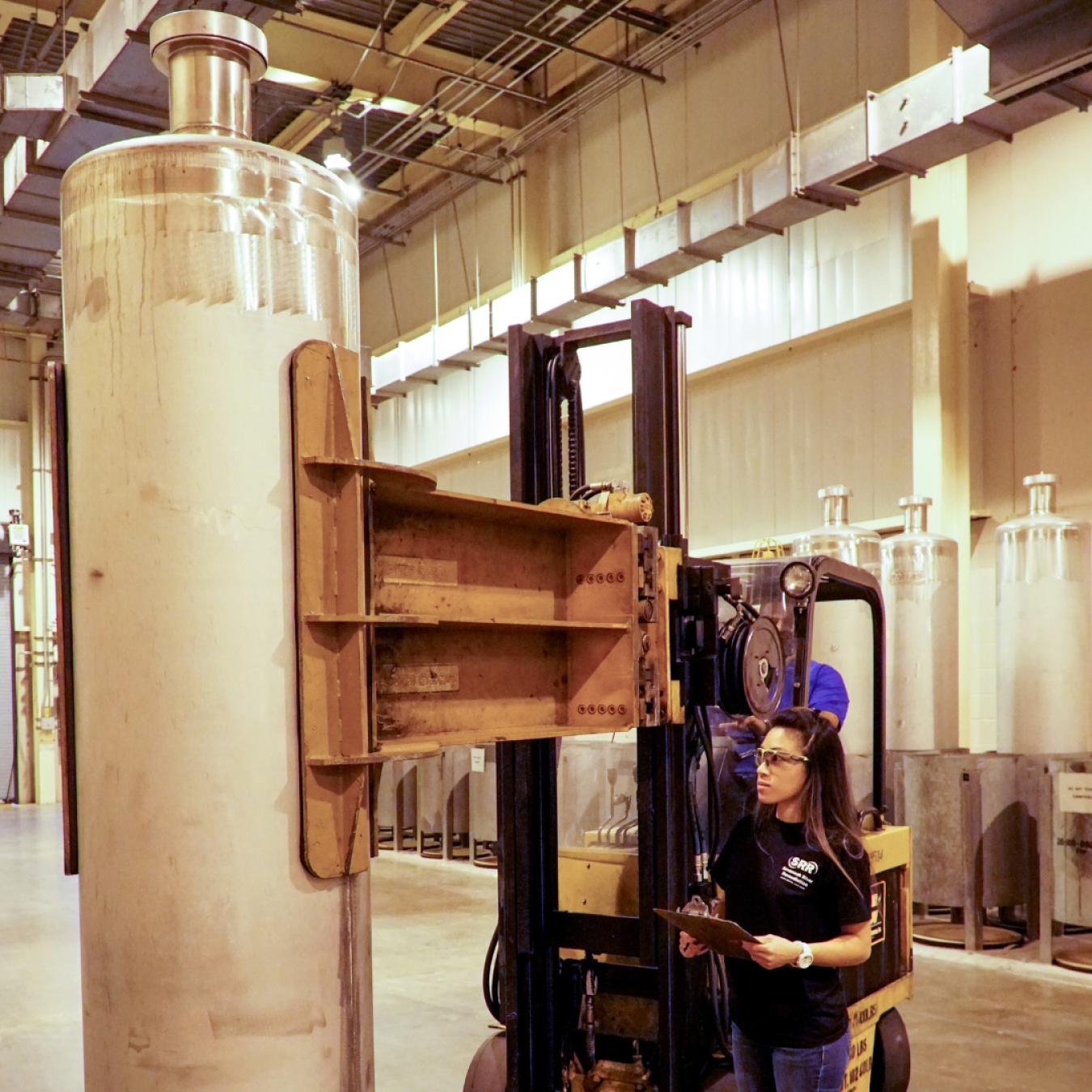EM’s liquid waste workforce at the Savannah River Site (SRS) recently surpassed 10 million safe working hours, proving that embracing a culture that puts safety first helps prevent serious injuries.
Office of Environmental Management
October 10, 2023
Savannah River Mission Completion (SRMC) employees observe stringent safety standards while moving a 10-foot-tall, stainless steel canister that will be filled with vitrified high-level waste at the Defense Waste Processing Facility. In September 2023, SRMC’s total workforce surpassed 10 million hours without an injury resulting in the employee being unable to return to work the next day.
AIKEN, S.C. – EM’s liquid waste workforce at the Savannah River Site (SRS) recently surpassed 10 million safe working hours, proving that embracing a culture that puts safety first helps prevent serious injuries.
Liquid waste contractor Savannah River Mission Completion (SRMC) exceeded 10 million safe hours earlier this month. The term “safe hours” represents the hours worked without an occupational-related injury or illness that results in the employee’s inability to return to work the next day. The current count has continued since April 2022, shortly after SRMC assumed operations of the SRS liquid waste program.
Jim Folk, DOE-Savannah River’s assistant manager for waste disposition, said safety has always been a value at SRS.
“We are proud of the safety culture that we nurture at SRS,” Folk said. “Time and again, we see that the best way to perform the job is also the safest way.”
Statistics from the U.S. Bureau of Labor Statistics indicate that a company the size of SRMC — which has 3,700 employees — in the hazardous waste treatment and disposal industry, with over 10 million working hours, would expect to experience 40 cases on average that would keep an employee from returning to work the next day.
SRMC President and Program Manager Dave Olson said the company always puts the safety of its employees first, noting that safety is one of the company’s four core values.
“In every job we perform, we consider the safety of the workers performing that job,” Olson said. “As we plan a task, we must always ask the question, ‘What could go wrong?’ We must question the processes that could pose a safety hazard and plan accordingly.”
Since the 10 million safe hours count began, SRMC has performed numerous high-hazard operations and maintenance tasks that include transfers of hazardous and radioactive liquid waste from underground tanks, and treating and immobilizing the waste.
“The work being performed across the entire SRS Liquid Waste Program is a one-of-a-kind challenge,” Olson said. “To accomplish so much with this safety record speaks highly of our team.”
Click here to watch a video in which SRMC employees explain why safety is important to them.
-Contributor: Jim Beasley
To receive the latest news and updates about the Office of Environment Management, submit your e-mail address.

